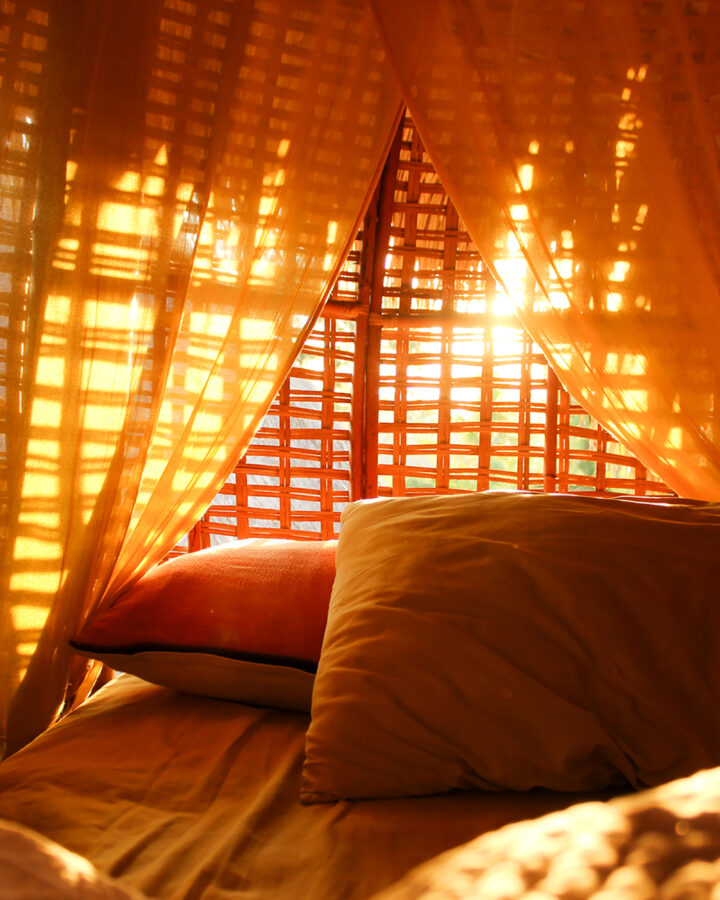Sunlight and Longevity: How Light Shapes Your Healthspan

From brighter mornings to darker nights, science reveals how sunlight can add years to your life, and why late-night light may take them away.
Sunlight is often overlooked as an ally in the [lon-jev-i-tee]nounLiving a long life; influenced by genetics, environment, and lifestyle.Learn More conversation. In the right amounts, sunlight helps regulate your sleep, lift your mood, and support everything from immune function to cellular repair. It’s one of the simplest, most natural ways to invest in your long-term health. As autumn settles in, our days grow shorter, and that shift in light has real consequences for longevity.
A recent study published in the Proceedings of the National Academy of Sciences found that people exposed to more daylight had a 17% to 34% lower risk of early death compared to those who spend more time in dimmer environments. And there’s a flip side: those exposed to bright light at night, especially between 1:00 and 6:00 AM, had a 34% higher risk of premature death. The lesson? Light is medicine, but timing matters. Here’s how to harness the benefits of sunlight while protecting yourself from its darker side.
The Health Benefits of Daily Sunlight Exposure
Sunlight sets your body’s master clock, supports your immune and cardiovascular systems, elevates your mood, and it costs nothing. Here’s how a little daily light exposure can yield lifelong returns.
- [vai-tuh-min dee]nounA vitamin essential for bone health and immune function.Learn More and Immune Health: Sunlight stimulates the production of vitamin D, essential for bone health, immune function, and [in-fluh-mey-shuhn]nounYour body’s response to an illness, injury or something that doesn’t belong in your body (like germs or toxic chemicals).Learn More reduction.
- Cardiovascular Benefits of UV Exposure: Sun exposure has been linked to lower blood pressure and reduced risk of [hahrt dih-zeez]nounConditions affecting heart health and circulation.Learn More, possibly due to nitric oxide release triggered by UV rays.
- Sunlight and Mood Regulation: Sunlight boosts serotonin levels, improving mood and potentially decreasing the risk of depression.
- [ser-kay-dee-uhn rith-uhm]nounYour body’s internal clock that regulates sleep and wake cycles.Learn More Reset: Exposure to natural light during the day helps regulate sleep-wake cycles, leading to better sleep quality and overall health.
The Dark Side: Nighttime Light and Mortality Risk
Exposure to artificial light late at night, especially between 2:30 and 3:00 a.m., weakens your circadian rhythm, disrupts melatonin, metabolism, hormonal balance, and immune function. The study found that light exposure during this window is associated with a 56% to 67% increased risk of cardiometabolic death. Even small amounts of ambient light during sleep can impair your body’s nightly repair cycles.
How to Protect Your Night Light Hygiene
- Use blackout curtains or a sleep mask to block streetlights and screen glow.
- Dim household lights after sunset, especially overhead LEDs.
- Install warm-toned lighting for evening use. Think Himalayan salt lamps or amber bulbs. Red light at night is less disruptive than blue light.
- Avoid screens for 1–2 hours before bed, or use blue light filters/night mode if you have to use a screen. Resist the urge to scroll on your screens before you’ve been in the natural sun.
- Protect your sleep schedule with morning light. Consistent light exposure, preferably within an hour of waking, helps protect your circadian rhythm, making it easier to fall asleep and stay asleep. Resist the urge to scroll on your screens before you’ve been in the natural sun.
Balancing Sunlight and Skin Safety
While sunlight offers health benefits, it’s crucial to protect the skin from harmful UV radiation. Aim for 10–30 minutes of unfiltered morning sun a few times per week, before 10 a.m. when UV levels are lower. Use SPF 30+ sunscreen, hydrate, and wear protective clothing during longer exposures.
How to Adjust to the New Light Routine
When daylight saving time ends, your internal clock lags behind the new schedule. These small adjustments can help you sync faster and feel more energized as days grow shorter:
- Get morning light every day. Within 30 minutes of waking, step outside or sit near a bright window for 10–15 minutes. Morning light is the strongest cue for resetting your circadian rhythm. Make sure you get sunlight before you get screen light.
- Avoid bright light at night. Keep lights dim after 8 p.m. and skip late-night scrolling to allow melatonin to rise naturally.
- Eat earlier. Aligning your meal timing with daylight helps your body adapt to new sleep and digestion patterns.
- Embrace the dark. Cozy evenings are your cue to wind down. Use the extra hour as a gift, read, stretch, or reflect instead of scrolling.
Light exposure is one of the simplest, most powerful longevity interventions available. This week, let the sun set your rhythm, and protect your nights from the glow that steals your rest.
Read This Next
The information provided in this article is for educational and informational purposes only and is not intended as health, medical, or financial advice. Do not use this information to diagnose or treat any health condition. Always consult a qualified healthcare provider regarding any questions you may have about a medical condition or health objectives. Read our disclaimers.

